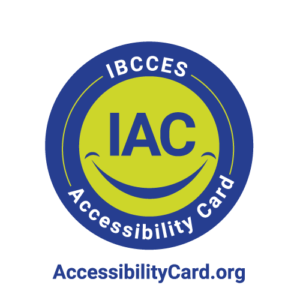
By Jackie Nunes
Once a child becomes mobile most parents invest significant effort into childproofing their homes. They watch their little ones like hawks from the time they can roll over and scooch through the crazy days of toddlerhood. But by the time their kids reach kindergarten, many parents can breathe a little bit easier and know that their kids are less apt to fall into physical danger through exploration.
That isn’t the case for many parents of children with autism, Down Syndrome, ADHD, and other special needs. Parents of kids who wander and don’t understand danger often have to remain hyper-vigilant forever and use a number of approaches to keep their kids safe. How do you protect a child who wanders off, runs across the street without looking, shares personal details with strangers, or puts themselves at risk of injury? We have some tips.
Remove hazards at home
The first place you’ll want to start is in the home. Being this is the primary place your child will be spending time, it makes sense to carefully go through your home to remove or reduce any hazard spots where your child can potentially get into trouble.
-
- Use sturdy childproof gates. If you’re going to use baby gates, make sure they are screwed to the wall and have latches that your child can’t open. You can use these to prevent access to stairways and other areas of the home. You can also set up a special play area with their favorite toys, books, stuffed animals— basically someplace they’ll find highly appealing that might distract from temptations of dangers around the house.
-
- If you have an alarm system, use the door chime feature. Most residential burglar alarms have a chime feature that can make a sound any time an exterior door or window is opened. Check the instruction manual to activate the setting. This is especially helpful if your child has no fear of getting up and potentially leaving during the night.
-
- Anchor furniture to the wall with brackets or straps. Most heavy furniture comes with anchor straps for safety. Be sure to follow the directions and secure top-heavy pieces to a wall stud so they don’t topple on your child.
-
- Get creative with door locks. Invest in good locks for your entry doors, and make sure at least one is a deadbolt. If your child knows how to open locks, put a second one up high, out of their reach. You also might want to explore electric locks that open with a fingerprint or passcode.
-
- Use latches for gates and screen doors. Install an eye hook latch towards the top of your screen or exterior glass door – this will be one more (high and out of reach) barrier for your child if he or she gets through the first layer of locks. These latches are also helpful on pleasant days where you might want to open your front door for some air or sunlight.
-
- Cover outlets. Place covers in any outlet that is remotely reachable by your child.
-
- Lock cupboards that contain cleaning products or breakables. Secure cabinets with childproof locks, especially those that have cleaners or other chemicals (while you’re at it, attach “poison” stickers with the visual “blech” face on any cabinets or cleaners that contain any potential hazards).
-
- Add window locks. Secure your windows so your child can’t use them to wander and/or fall out.
-
- Block pool access. If you have a pool, be sure it has a tall and strong fence around it, along with a good safety latch for the door.
- Limit access to the Internet. Download games and other content onto tablets or mobile devices and then put the devices into “airplane mode” or require a password to go online. Keep computers in common areas of your home, and use parental controls to limit the sites your child can visit.
As your child reaches teen or adult years, if safety and elopement are still a concern, you can modify your home to give your child a feeling of privacy and independence, while also making sure they are safe.
Use heightened supervision at school and in public
Going to school and being out in public can pose extra risks if your child tends to bolt or elope. Make sure everyone your child is likely to encounter understands the risk and knows how to reach you.
-
- Partner with your child’s school. Meet with the principal, your child’s teacher, the school bus driver, and any other school officials and relay key information about your child.
- Consider getting a wearable GPS device or ID bracelet. There are several trackers that can be worn in the form of a necklace or bracelet. You can also get a medical ID bracelet or necklace with your child’s identity (especially if your child is not verbal) and diagnosis.
Additionally, if your child is a wanderer, let your local police and fire department know of this tendency. It’s also a good idea to take a CPR class so you can assist your child if an emergency occurs at your home.
Take extra precautions when traveling
Traveling with a child who is on the autism spectrum or has another disability and is prone to wandering can be a stressful proposition. New places and routines are upsetting to some kids. Others are stimulated by new sights and sounds and feel drawn to explore. For the best experience, take some extra precautions.
-
- Talk to your child about the trip before you go. Depending on your child’s age and comprehension level, describe where you’re going, how you will get there, and some of the steps along the way. Look at pictures and consider making a schedule. During your travels, you can point out items of interest.
-
- Leave yourself plenty of time. Everything will go more smoothly if you’re not rushing to the gate or worried that you have forgotten things. Finish packing the night before and if you’re flying, plan to get to the airport well before your departure time.
-
- If possible, share supervision duties with another adult. Communicate clearly and take turns having primary responsibility. That way if you need to go to the restroom or buy a cup of coffee, you can, and you eliminate the risk of each person thinking the other was watching the child.
-
- Make sure your contact information is on your child somewhere. A wearable GPS device and/or an ID bracelet is ideal. But for children who won’t tolerate those, consider getting temporary tattoos for the trip. You should also make sure their name and a parent’s cell phone number are written somewhere on their clothing or shoes.
- Dress your child in bright colors. If your child does get out of your sight, he or she will be easier to spot in a bright, distinctively colored outfit. Security guards and others will also have an easier time helping you look for your child.
Engage in explicit teaching
Since children with special needs often have an undeveloped sense of danger, parents have to find ways to teach their kids in ways they understand. This might mean communicating dangers in a different way or finding a method that enables other people to help them if they run into trouble.
-
- Use visual aids to teach safety. If your child has trouble communicating or listening, visual aids might be more effective. Get crafty and make signs and/or labels with your child. These can serve as reminders of safety concerns or reinforce safety rules they might forget.
-
- Teach your child your address and phone number. If they can’t remember these, write this information in a backpack, on clothing or even in shoes so other people can help them in the event they get lost.
-
- Talk to your child about strangers. Teach your child how to respond if approached by a stranger and not to offer information or let people into your home. If necessary, place an age-appropriate infographic or photo on the back of your front door to be a reminder.
-
- Use storybooks and pictures. Stories are a great way to illustrate safety points that your child may have difficulty understanding.
-
- Role play different situations. You can make a game out of learning safety by role-playing with your child. Model what to do in different situations.
- Sign up for water safety classes. Teaching your child to swim is the single best thing you can do to keep him or her safe. Drowning is one of the biggest threats for people on the autism spectrum.
Additionally, be sure to let family, teachers, friends, and other community members know about your child’s safety issues. You’ll also want to be sure any safety issues are addressed in your child’s IEP so preventative and security measures can be put into place to keep your child protected while at school.
Statistics suggest about 50 percent of kids with autism are prone to wandering off. There are also other conditions including Down Syndrome and ADHD where elopement can be a concern. The more protective mechanisms you can put into place early on, the safer your child will be.
By Jackie Nunes, Wondermoms.org



 IBCCES Accessibility Card Now Available as a Mobile App
IBCCES Accessibility Card Now Available as a Mobile App